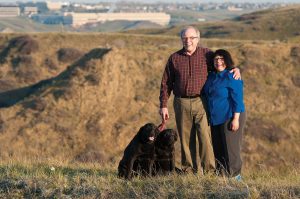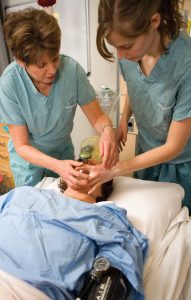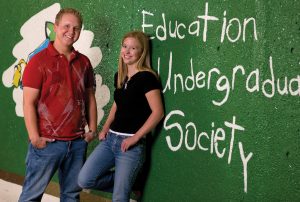In July 2000, I became Dean of Education at the University of Lethbridge.
By that time the worst of Alberta’s deficit reduction years were over, the fiscal house was in order, oil prices were beginning to rise and things were looking up. Public opinion polls at the time showed that a majority of Albertans thought health and education should be the government’s priorities. Nevertheless, the mid-90s mantras of greater accountability, access, affordability and responsiveness continued to hold sway in the early years of the new millennium. Employing a business-plan model and bluntly competitive approach, funding to post-secondary institutions was provided through a combination of base operations grants and targeted envelope funding. The former were designed to fund program delivery, administration and general capital maintenance needs of institutions, and the latter to prompt institutions to meet what the government considered current and emerging needs as well as serve as a reward for meeting government objectives. Noting that even with these combined funds, base-operating grants for post-secondary education were reduced by 21 per cent, many institutions responded by cutting student enrolments. Not so, at the University of Lethbridge.

Dr. Bill Cade (LLD ’12) and his wife Elsa were the presidential couple for a decade.
In June 2000, Dr. William H. Cade (LLD ’12) became president of the University of Lethbridge. A Texan by birth, Bill (as he was known to everyone) embraced and practiced a genial, accessible, open style of communication that quickly made him a household name throughout the community and province. One was never in any doubt in speaking with Bill that he was the president of the University. But he understood very well that a well-functioning organization recognized and paid due attention to the work and contribution of everyone, be they students, academic faculty or staff, a philosophy demonstrated by his inauguration in 2003 of the President’s Award for Service Excellence. Blessed with an absolutely prodigious capacity to remember names, Bill would greet people correctly by name throughout the University. He was also amazingly accessible and a phone call or effort to contact him invariably received a prompt, interested response. A professor of biological sciences, Bill encapsulated the notion of scholar president. In faculty parlance he “walked the talk” by maintaining a working lab with graduate students throughout his two terms and a visit to his office was never complete without an examination of the many live specimens of crickets on display there in glass cases. Bill was always happy to talk about them and in the most interesting and entertaining manner to draw astute parallels between cricket behaviour (his passionate research interest) and human behaviour — including leadership.
Bill Cade would always describe himself as fortunate in having as vice-president (academic) and provost, Dr. Séamus O’Shea. Séamus had lived through the worst days of the deficit reduction cuts of the mid-90s, an experience that had given him a thick-skinned, pragmatic sense of realism and a relentless determination to succeed no matter what the obstacles. His Irish background had instilled in him a passionate commitment to the “life of the mind” and to the importance of everyone having access to it. Indeed, he embodied the foundational beliefs of the University — its emphasis on liberal education, the importance of quality teaching and research, and the belief that a student was never just a number, but an individual whose talents and skills should be honed and developed by working closely with outstanding scholars. Séamus had a wicked sense of black humour that he used effectively and with great aplomb whenever called for, including one storied occasion where on going through customs and being asked if he had anything to declare, he laconically replied “nothing except my wit!” Together, president and provost made a dynamic team as they set themselves to the task of working the political and economic environment to the University’s advantage.
Among the five funding envelopes (Access, Performance, Infrastructure Renewal, Research Excellence and Innovation and Science Research Investment), the Access Fund was the largest and made funds available for the expansion of programs identified with economic expansion and employment. Unsurprisingly, they favoured the areas of science, technology, medical training and business, leaving the arts, humanities and social sciences — areas deemed less likely to lead to employment in the new economy — comparatively underfunded. By this time, the University had already put in place a decentralized budget model that gave deans and their Faculties the autonomy and incentive to pursue new, innovative programming. It had also radically improved its fiscal management capacity by hiring experienced, highly qualified financial personnel and situating them not just in central administration but as financial officers in every Faculty. Supported by such expertise, and at every level by an exceptional cadre of committed non-academic staff in key administrative units such as the Registrar’s Office, the Faculties became veritable hives of entrepreneurial activity.
The challenge was to package new programs in a way that was attractive, that served everyone’s interests and that enabled the University to channel monies obtained into other existing areas. So, under the IT (Information Technology) umbrella, for example, a proposal was submitted combining computer science, new media (Fine Arts) and geography (GIS), the funds thereby obtained serving to support and bolster a range of other academic and non-academic areas tangentially related. It was an exhilarating, ingenious (albeit sometimes very stressful) way to bend the political/financial environment to the University’s own purposes, and it paved the way for a level of faculty collaboration and innovation that was truly remarkable and that persisted even after the Access funding process was phased out around 2009. Among the unique first of their kind programs developed were the Fine Arts Digital Audio Arts program and Health Sciences programs in Public Health and Therapeutic Recreation. The University also developed a range of new Aboriginal programs and support initiatives including the Faculty of Education Niitsitapi Teacher Education Program (offered in collaboration with Red Crow Community College); the Faculty of Management First Nations’ Governance Program (offered through a partnership with the Department of Native American Studies); the Arts & Science First Nations Transitions Program; and Health Sciences Support Program for Aboriginal Nursing Students (SPANS). By 2012, fall semester student enrolments had increased to 8,253 students (from 6,410 students in 2000), and a host of new programs had been created across Faculties that deepened the University’s original commitment to liberal education, adapting it adroitly to 21st century contexts.
 Unsurprisingly, growing numbers created space pressures, leading the University to expand beyond its original, iconic Arthur Erickson building and to erect a number of new buildings. After a 10-year fundraising campaign, the long-awaited Library Information Network Centre (LINC) was officially opened in 2001. That same year saw the opening of the Canadian Centre for Behavioural Neuroscience. The four-storied addition to Turcotte Hall (the new home of the Faculty of Education) and the Alberta Water and Environmental Science Building were opened in 2008, followed quickly by Markin Hall (home to the Management and Health Sciences Faculties) in 2010. A new residence village, the 1st Choice Savings Centre for Sport and Wellness and the Community Sports Stadium were also erected during this period. Did the new buildings keep the faith with Erickson’s original architectural vision? Unfortunately, expediency and piece-meal funding made that impossible. The buildings erected represented a hodgepodge of styles and eras some distinctly less impressive than others. More detrimentally, it split into different buildings disciplines that hitherto had worked and lived interactively, impacting thereby the sense of liberal togetherness inspired and facilitated by Erickson’s original conception. Although perhaps inevitable, that was a serious loss.
Unsurprisingly, growing numbers created space pressures, leading the University to expand beyond its original, iconic Arthur Erickson building and to erect a number of new buildings. After a 10-year fundraising campaign, the long-awaited Library Information Network Centre (LINC) was officially opened in 2001. That same year saw the opening of the Canadian Centre for Behavioural Neuroscience. The four-storied addition to Turcotte Hall (the new home of the Faculty of Education) and the Alberta Water and Environmental Science Building were opened in 2008, followed quickly by Markin Hall (home to the Management and Health Sciences Faculties) in 2010. A new residence village, the 1st Choice Savings Centre for Sport and Wellness and the Community Sports Stadium were also erected during this period. Did the new buildings keep the faith with Erickson’s original architectural vision? Unfortunately, expediency and piece-meal funding made that impossible. The buildings erected represented a hodgepodge of styles and eras some distinctly less impressive than others. More detrimentally, it split into different buildings disciplines that hitherto had worked and lived interactively, impacting thereby the sense of liberal togetherness inspired and facilitated by Erickson’s original conception. Although perhaps inevitable, that was a serious loss.
Research also began to assume a more visible role in the University in the new millennium. Although Lethbridge had long had a pool of outstanding researchers in a variety of innovative areas, it had a relatively modest research profile, particularly in comparison with the larger comprehensive universities to the north. The year 2000 saw the creation of the Canada Research Chairs Program (CRCP) and the internal Board of Governors Research Chairs (BoGRC). It also saw the implementation of a strategic, thematic approach by Vice-President (Research)
Dr. Dennis Fitzpatrick that proved enormously effective in attracting funding and resources that could be shared. That led to the development of centres of excellence in a range of broad-based areas including neurosciences, water resources in semi-arid ecosystems, biotechnology and others. To further this increased emphasis on research, and to help attract and retain excellent faculty, the Faculty of Arts & Science reduced its teaching load from five courses to four. In response to a prevalent perception that the sciences were receiving a disproportionate amount of the research awards and resources made available, the University Scholars Program was established in 2007 with the explicit intention of promoting research excellence across all Faculties.
Research and research training go hand in hand. In the early days of the University, the latter was accomplished by faculty members identifying and creating research opportunities for the most promising senior undergraduates, an important mentor practice that still continues today. The 2000s however, saw a School of Graduate Studies officially established and the development of PhD programs initially in neuroscience and the sciences, and later in health sciences, social sciences and education. The range of master’s programs offered also radically expanded to include every Faculty putting pressure on existing university services that were created with undergraduate students primarily in mind. Combining the strengths of different Faculties, some innovative interdisciplinary graduate programs were developed including the Master of Education program in Inclusive Education and Neuroscience, and a collaborative PhD Program in Population Studies in Health delivered jointly by the Faculty of Health Sciences and the Faculty of Arts & Science. All of these initiatives ably demonstrated the University’s ability to succeed as a comprehensive, research-intensive university, capable of pursuing and actively engaging students in innovative research opportunities up to the highest academic levels. The success of these initiatives was confirmed in 2012 when the University of Lethbridge was named Research University of the Year (undergraduate category) by RE$EARCH Infosource Inc.
 And what of teaching? Did the University’s increased emphasis on research erode its original commitment to teaching excellence? That is a question one often hears raised and debated. On the one hand, there have been significant developments. A Board of Governors Teaching Chair was inaugurated in 2007, and a Teaching Centre, spearheaded by Associate Vice-President (Academic) Dr. Andrew Hakin, was created with the assistance of Faculty of Education professors, Drs. Pamela Adams and David Townsend. A timely and important initiative, the Teaching Centre was explicitly created to support and encourage excellent teaching practices and to promote scholarship and research in teaching and learning. But these developments notwithstanding, and the stipulation that tenure and promotion at the University of Lethbridge still entails demonstrated excellence in research and teaching, a niggling sense prevails that as the University’s prowess in research grew, teaching became seen as less important, less cited in promotional materials, less valued as an academic activity. More detrimentally, it has led to a divisive sense of inequity as faculty members in Faculties with a five-course teaching load and accordingly less time to devote to research, feel themselves assigned a lesser role in the University of Lethbridge brand.
And what of teaching? Did the University’s increased emphasis on research erode its original commitment to teaching excellence? That is a question one often hears raised and debated. On the one hand, there have been significant developments. A Board of Governors Teaching Chair was inaugurated in 2007, and a Teaching Centre, spearheaded by Associate Vice-President (Academic) Dr. Andrew Hakin, was created with the assistance of Faculty of Education professors, Drs. Pamela Adams and David Townsend. A timely and important initiative, the Teaching Centre was explicitly created to support and encourage excellent teaching practices and to promote scholarship and research in teaching and learning. But these developments notwithstanding, and the stipulation that tenure and promotion at the University of Lethbridge still entails demonstrated excellence in research and teaching, a niggling sense prevails that as the University’s prowess in research grew, teaching became seen as less important, less cited in promotional materials, less valued as an academic activity. More detrimentally, it has led to a divisive sense of inequity as faculty members in Faculties with a five-course teaching load and accordingly less time to devote to research, feel themselves assigned a lesser role in the University of Lethbridge brand.
In 2010, Dr. Michael Mahon became president of the University of Lethbridge. If Bill Cade started his presidency at a time when things were looking up, the opposite can be said of President Mahon and Provost and Vice-President (Academic) Dr. Andrew Hakin. Their terms began after the great recession of 2008 had ushered in a period of political/economical uncertainty that saw oil prices plunge, a changing succession of premiers — four during the period 2012-2016 — and a relentlessly unpredictable environment where constant cuts were the order of the day. It didn’t help that these challenges occurred in a period of heightened competition for undergraduate students, as the impact of the Government’s Roles and Mandates Policy Framework (2007) enabling colleges to apply for degree granting status began to make itself felt, undermining the University’s hitherto effective and highly successful transfer arrangements with other institutions.
Political/financial challenges notwithstanding, President Mahon quickly coined the phrase “Destination University” to indicate that Lethbridge no longer functioned as a primarily undergraduate “feeder” institution, providing baccalaureate education to students transferring from colleges and in turn sending them on to pursue their graduate education in larger comprehensive universities. Instead, it asserted boldly that students and faculty members could engage in full, meaningful academic careers at the U of L, in a context that emphasized the highest standards of academic programming and research, and that was grounded, moreover, in our unique history and perspective.
Commitment to that history and unique perspective is writ large in two of the most important developments initiated. In 2002, Elder Bruce Wolf Child gave the University the Blackfoot name “Nato’ohkotok” (Medicine Rock) to indicate the wisdom, knowledge, solidity and connection to the land and people of Blackfoot territory. The integrity of that connection was made visible in 2014 with the official opening of Iikaisskini Gathering Place. Envisioned as a vibrant and empowering cultural centre on campus where Blackfoot and other Aboriginal languages can be spoken, and where Elders, community members, students and staff can meet and explore knowledge together, Iikaisskini has already begun to play an important educational role in fostering appreciation and respect for Blackfoot and other FNMI heritage throughout the University and beyond.
Given the atmosphere of fiscal austerity and restraint that characterized the last several years, nobody on campus would have been surprised to see the massively conceived “Destination Project” postponed or at the very least scaled back. Nevertheless, mindful of the strategic importance of having capital projects “shovel ready” when funding became available, president, provost and the campus and broader community continued to push, fundraise and plan and in doing so achieved the inconceivable — significant government funding for a development has already commenced construction and that will see the creation of a new science and academic building. It is indeed the most significant development on campus since University Hall was completed in 1972.
The collective aspirations for the project are no less significant — a new science and academic building that will serve as a catalyst for innovation; classrooms, research spaces and labs explicitly designed to accommodate and encourage groundbreaking teaching as well as research; sustainable design; and a place for community engagement and outreach. Eventually through the creation of a central revitalized home for the humanities and social sciences in University Hall, cross-disciplinary programs and research opportunities for students will once again be more easily facilitated and encouraged, so reigniting in a 21st century context that commitment to liberal education that was and is the hallmark of the U of L.
Are these heady aspirations attainable? Undoubtedly, challenges lie ahead. But they did too 50 years ago when a small group of scholars and learners forged a diverse and inclusive tradition of excellence that inspires us still today. I have no doubt that others will take up the challenge and that the U of L will find a way to continue and enhance that tradition in the years ahead.
Story by By Jane O’Dea, Dean Emerita.

